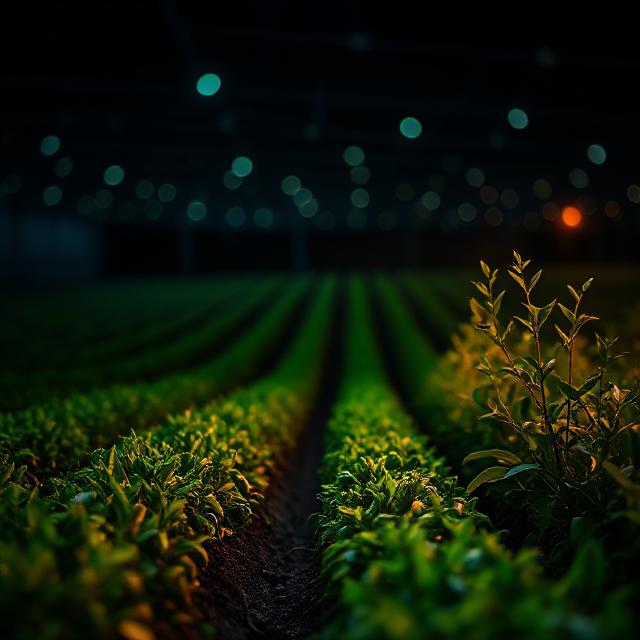Shifting Cultivation
Shifting cultivation, also known as slash-and-burn agriculture, is a traditional farming practice where land is cleared for cultivation by cutting down vegetation and burning it. The cleared land is used to grow crops for a few years until the soil fertility decreases, after which the farmer shifts to a new plot, leaving the old one fallow to regenerate.
Key Features of Shifting Cultivation:
- Clearing Land: Vegetation (trees, shrubs) is cut and burned to clear land and add nutrients to the soil through ash.
- Short-Term Cultivation: Crops are grown for 2–3 years or until the soil becomes less fertile.
- Fallow Period: The land is left uncultivated for a few years to regain fertility naturally.
- Shifting: Farmers move to a new plot, repeating the process.
Steps in Shifting Cultivation:
- Selection of Land: Forest or bushland is chosen for farming.
- Cutting and Burning: Vegetation is slashed and burned to prepare the land.
- Planting Crops: Seeds are sown without plowing the land; crops include cereals, pulses, or tubers.
- Harvesting: Crops are harvested until the soil’s fertility declines.
- Shifting to New Land: The old plot is left to regenerate while a new plot is cleared.
Advantages of Shifting Cultivation:
- Soil Fertility: Ash from burnt vegetation provides nutrients for the soil.
- Low Cost: Requires minimal tools and resources.
- Adaptability: Works well in areas with low population density and abundant land.
Disadvantages of Shifting Cultivation:
- Deforestation: Large-scale clearing leads to the loss of forests.
- Soil Erosion: Frequent burning and lack of vegetation cover can erode soil.
- Loss of Biodiversity: Habitats are destroyed during clearing.
- Low Productivity: Soil fertility declines quickly, limiting crop yield.
- Environmental Impact: Burning releases greenhouse gases, contributing to climate change.
Regions Where It Is Practiced:
- India: Known as Jhum (Northeast), Podu (Odisha and Andhra Pradesh), Kumri (Western Ghats), etc.
- Southeast Asia: Ladang (Indonesia), Ray (Vietnam).
- Africa: Chitemene (Zambia), Masole (Congo Basin).
- South America: Roca (Amazon Basin).
- Pacific Islands: Kaingin (Philippines).
Key Observations:
- Regional Adaptations: Names and methods vary by geography, culture, and climate.
- Sustainability: Shifting cultivation is traditional but is being replaced by modern methods due to environmental concerns.
- Community Practices: Most practices are deeply rooted in indigenous communities and their lifestyle.
Current Status:
While shifting cultivation has been sustainable in traditional societies, it is now under scrutiny due to its environmental impact and the increasing demand for permanent agricultural practices. Many governments are encouraging farmers to adopt settled farming methods or agroforestry systems.
Table: Shifting Cultivation Practices in India and Worldwide
| Region/Country | Local Name | Description |
|---|---|---|
| India | ||
| – Northeast India | Jhum | Practiced in hilly regions; involves cutting and burning vegetation before planting. |
| – Odisha & Andhra Pradesh | Podu | Slash-and-burn technique similar to Jhum. |
| – Western Ghats | Kumri | Practiced by tribal communities in forested areas. |
| – Madhya Pradesh | Bewar/Baewar | Tribal shifting cultivation; involves rotation of forest patches. |
| – Rajasthan | Valre/Vadlu | Practiced in semi-arid regions. |
| – Kerala | Penda | Involves small-scale slash-and-burn farming. |
| – Maharashtra | Dahiya | Practiced in forested areas by tribal communities. |
| – Andhra Pradesh | Korampu | Practiced by the hill tribes in forested regions. |
| – Tamil Nadu | Penda/Kumari | Similar to Kumri, practiced by tribal groups. |
| World | ||
| – Brazil (Amazon) | Roca | Slash-and-burn farming practiced in the Amazon rainforest. |
| – Indonesia | Ladang | Practiced in tropical forests; involves clearing areas for farming. |
| – Philippines | Caingin | Similar to Ladang, involving slash-and-burn in forested areas. |
| – Mexico & Central America | Milpa | A system of growing maize, beans, and squash after clearing forests. |
| – West Africa | Chitemene | Practiced in Zambia and neighboring areas; branches are burned to improve soil fertility. |
| – Sri Lanka | Chena | A form of slash-and-burn farming, often for rice cultivation. |
| – Papua New Guinea | Kaingin | Shifting cultivation in forest regions. |
| – Vietnam | Ray | Practiced in upland regions; involves burning for agriculture. |
| – Madagascar | Tavy | Used in rainforests, especially for growing rice. |
| – Thailand | Huen Nong | Shifting agriculture in northern forest areas. |
| – Congo Basin | Masole | Practiced by indigenous communities for subsistence farming. |
| – Ethiopia | Watre | Traditional slash-and-burn method for growing staple crops. |
| – Myanmar (Burma) | Taungya | Shifting cultivation combined with forestry. |
| – Laos | Hai | A traditional system practiced in upland regions. |
| – Caribbean Islands | Conuco | Slash-and-burn agriculture for tropical crops like bananas and yams. |
| – Peru | Rastrojo | Practiced in the Amazon basin for small-scale subsistence farming. |
| – Himalayan Region | Khorwot | Shifting cultivation system used in high-altitude areas. |




